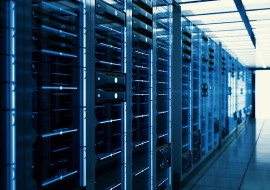What Are Distributed Energy Resources?
For much of the 20th century, there was one way for most people to get electricity. It was generated at power plants, often by burning fossil fuels, and transmitted long distances over a centralized grid until it arrived at customers’ homes and businesses. In recent decades, however, technologies for generating and managing electricity at the place of consumption have emerged and begun decentralizing the power grid. These technologies are known as distributed energy resources (DERs). Examples include energy efficiency, energy storage, demand response, electric vehicles, grid-interactive efficient buildings, combined heat and power, and renewable energy such as solar photovoltaics.
The Benefits of DERs
By providing power supply and services close to where they are used, DERs can lower costs for consumers, improve the reliability and resilience of the power grid, and increase equity in the power sector.
Reduced Costs for Consumers
A key benefit of distributed energy resources is their ability to reduce energy costs for the end-user. Energy efficiency, for example, lowers costs by enabling customers to decrease their energy consumption while receiving the same or better energy services, such as lighting or heating. DERs that provide on-site generation avoid the need for expensive transmission and distribution infrastructure. By deploying DERs in areas with high load, utilities can delay or offset the need to build out more fossil-fueled generation or distribution substations. These applications, known as non-wires solutions, reduce costs on a system-wide level as well as for the individuals on the receiving end.
Reliability
Distributed energy resources can lead to a more reliable and resilient grid. Generation, demand response, and energy efficiency can all provide capacity during system peaks, reducing the risk of brownouts and blackouts. In addition, DERs can be used to create microgrids, “islands” with their own generation and storage that can isolate from the larger grid in the event of a system-wide outage. This type of resilience is especially useful in the aftermath of inclement weather events to ensure that power is available to critical infrastructure, such as hospitals and other emergency services.
Equity
Under the conventional utility model, private companies typically own and operate grid infrastructure under a regulated monopoly franchise. Distributed energy resources represent an opportunity for new participants to own, control, and, in some cases, profit from energy services. Community solar projects, income-based energy efficiency programs, and neighborhood microgrids are some examples of DERs that can put low-income, economically distressed, and environmental justice groups in control of their energy supply.
The Value of Combining Energy Efficiency with other DERs
Distributed energy programs, products, and services are often provided separately, but their value compounds when they are integrated into comprehensive energy solutions. ACEEE research shows that programs that integrate energy efficiency with other DERs benefit customers more than either service alone, providing bill reductions, positive demand response payments, and increased satisfaction. Utilities also benefit from greater program participation and grid reliability.
Obstacles to Widespread Adoption of DERs
Despite the benefits DERs provide to electric consumers and the grid, obstacles to their widespread adoption remain. Because DERs are sited and in many cases controlled by non-utility actors, grid operators may not have as much insight into their performance as they would into a conventional power plant, requiring changes to operational and planning frameworks. In addition, many utilities’ business models rely on expanding sales from a more-centralized grid system. Without adjustment, DERs such as energy efficiency and renewable energy represent a reduction in kWh sales and therefore lost revenue for utilities. In some jurisdictions, regulators have enacted reforms, such as performance incentives and revenue decoupling (i.e., separating a utility’s profits from the amount of electricity it sells) to align DERs with utilities’ profitability.



